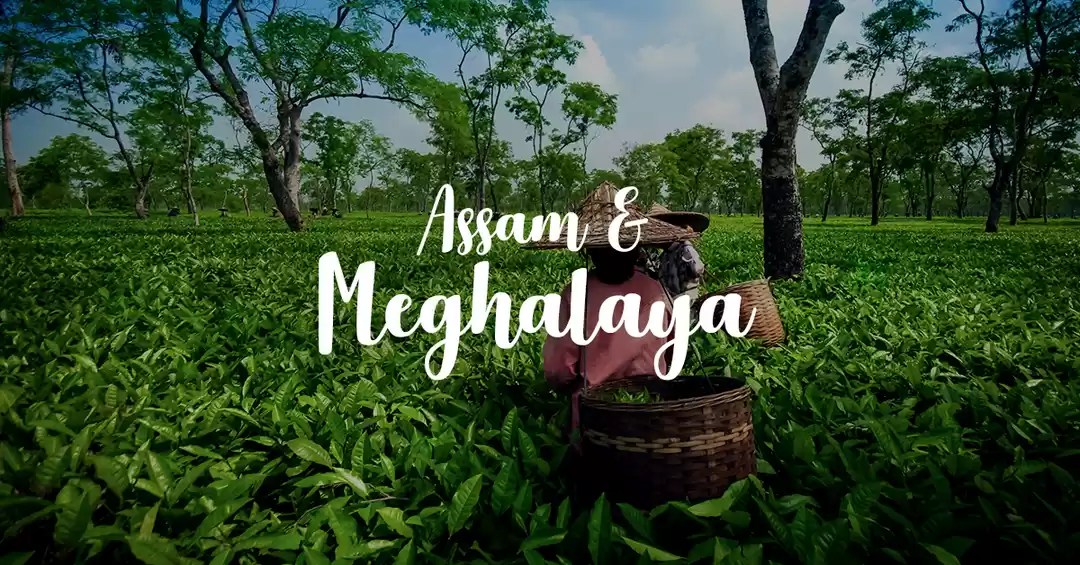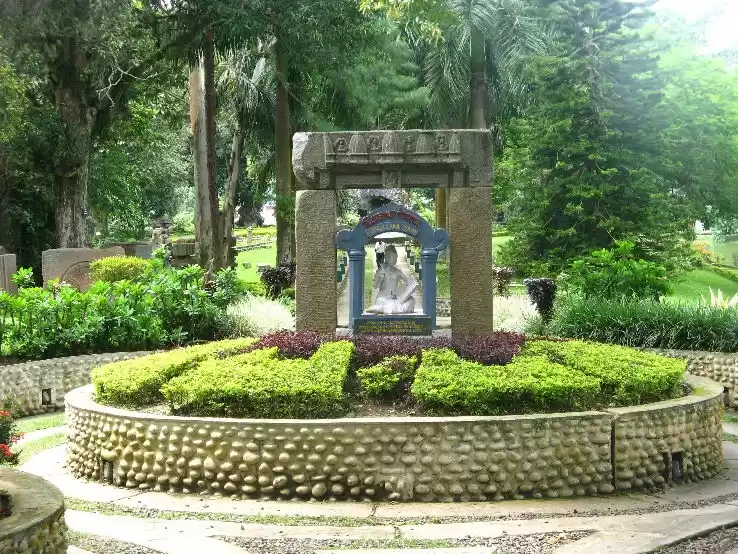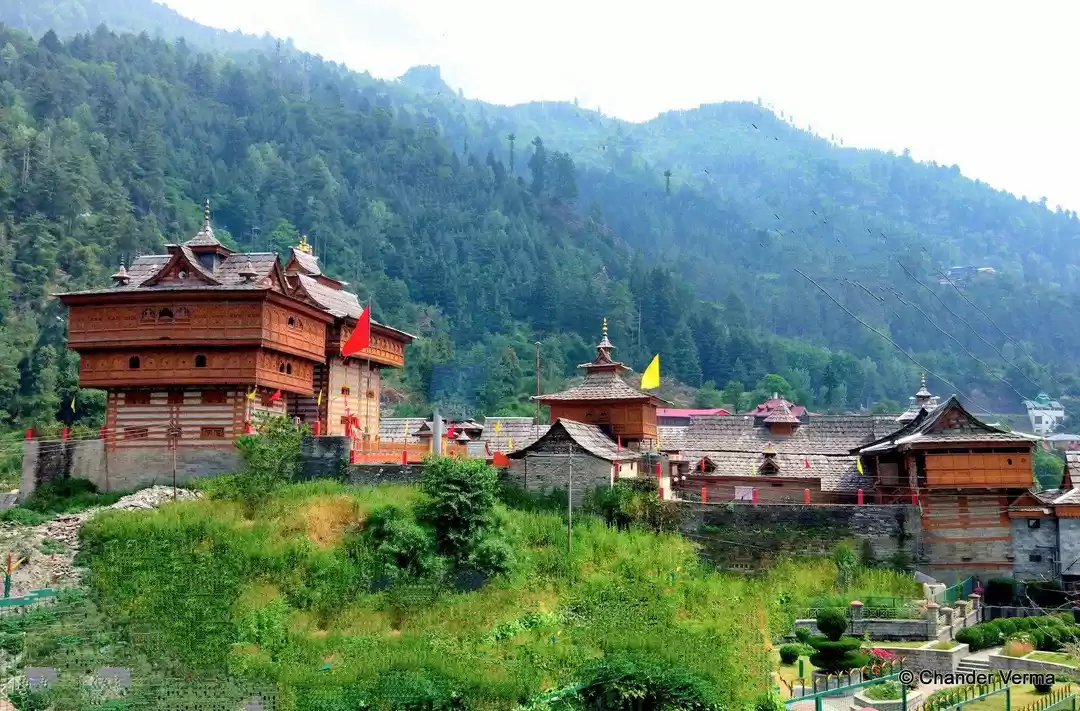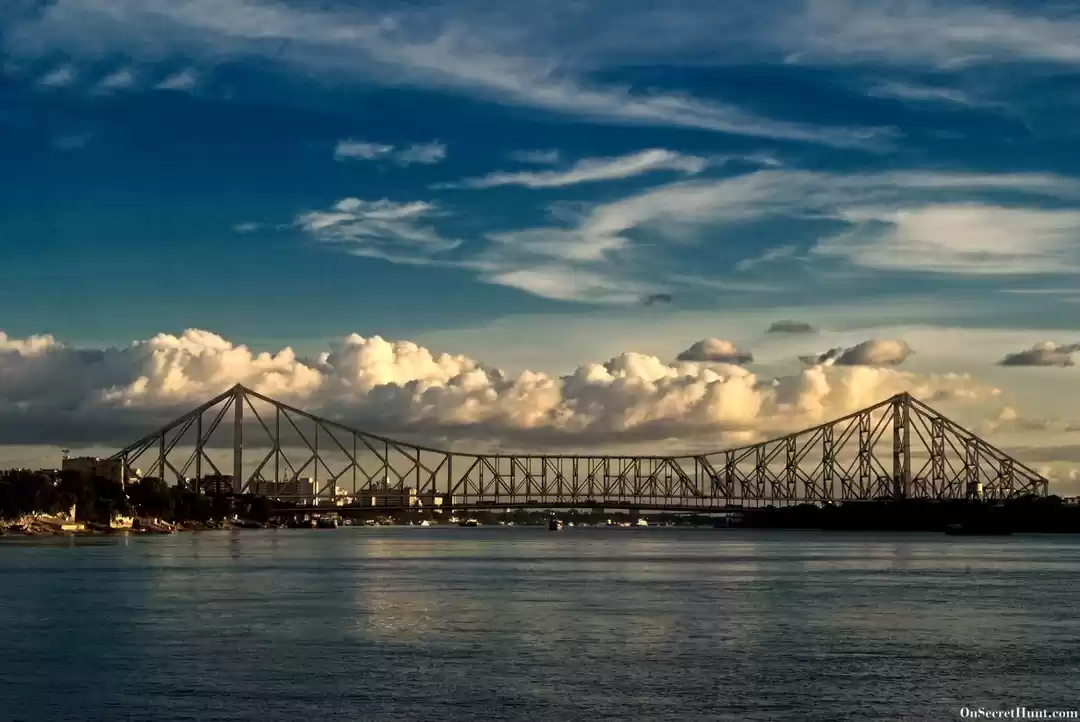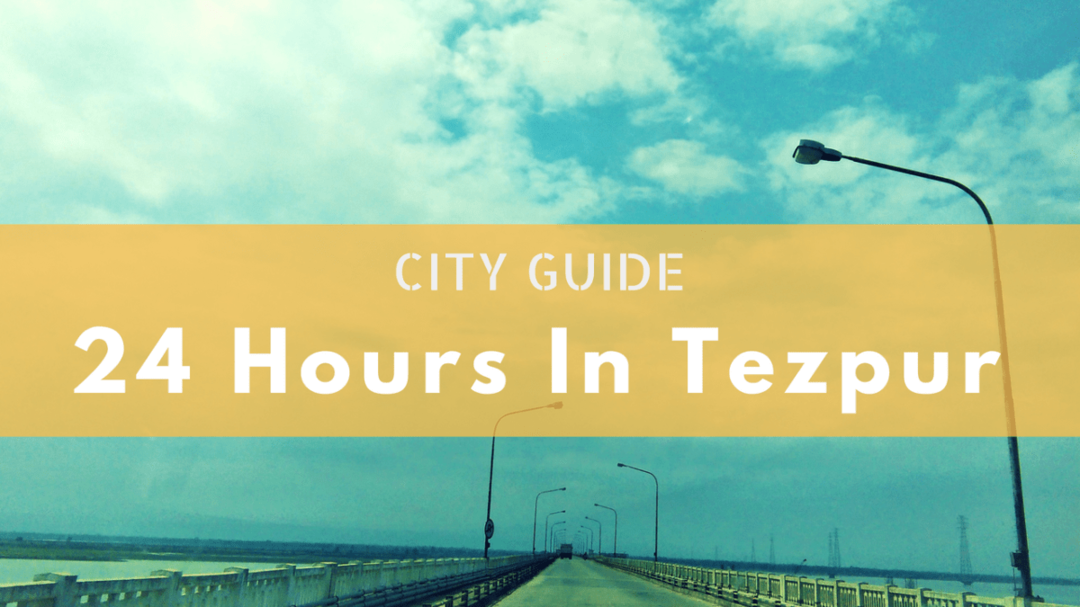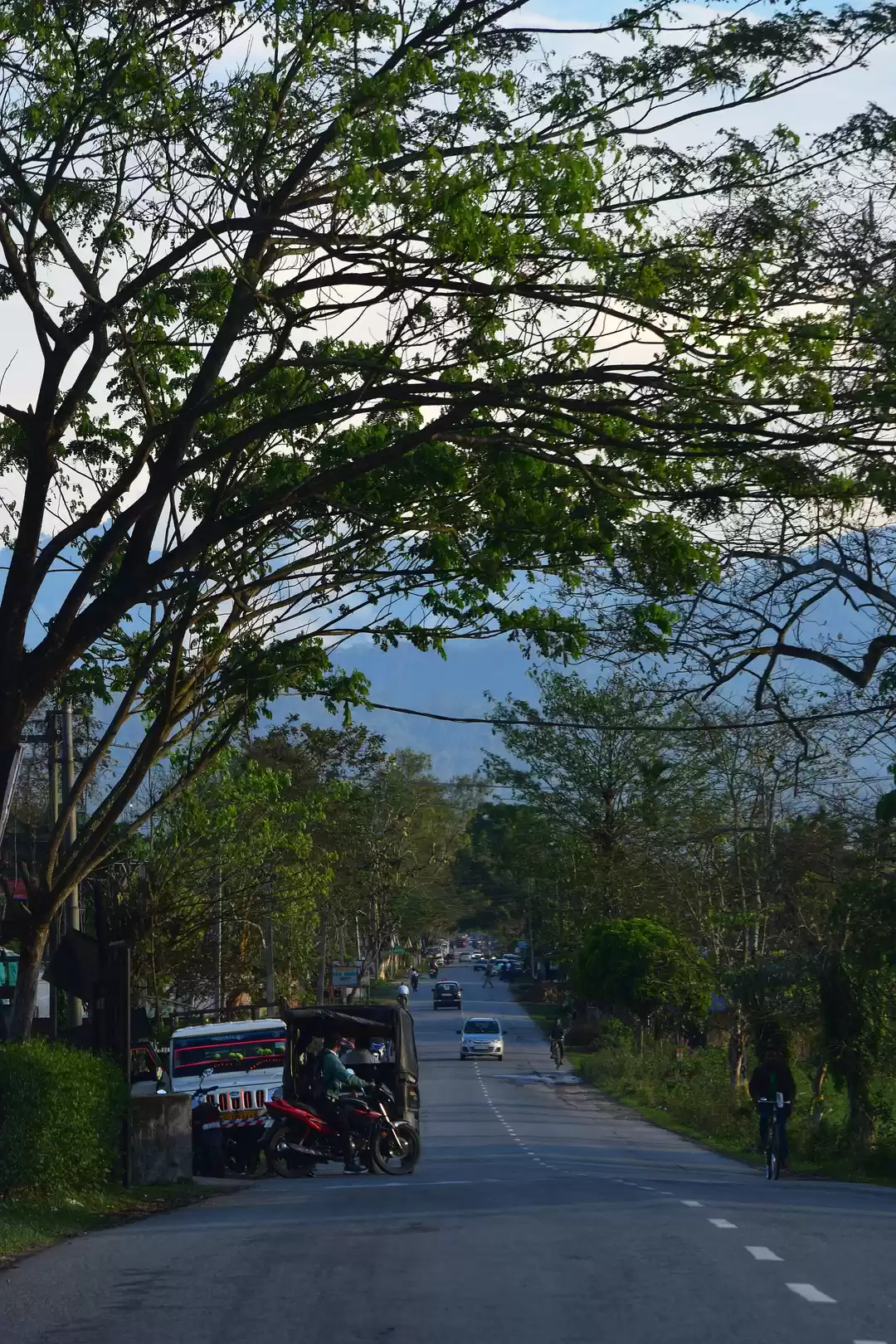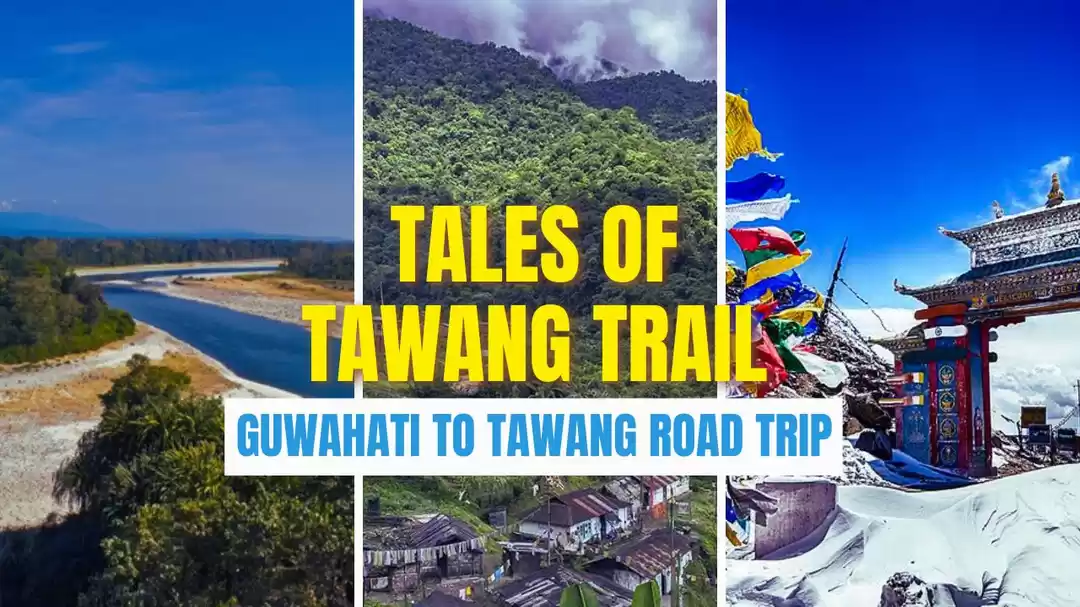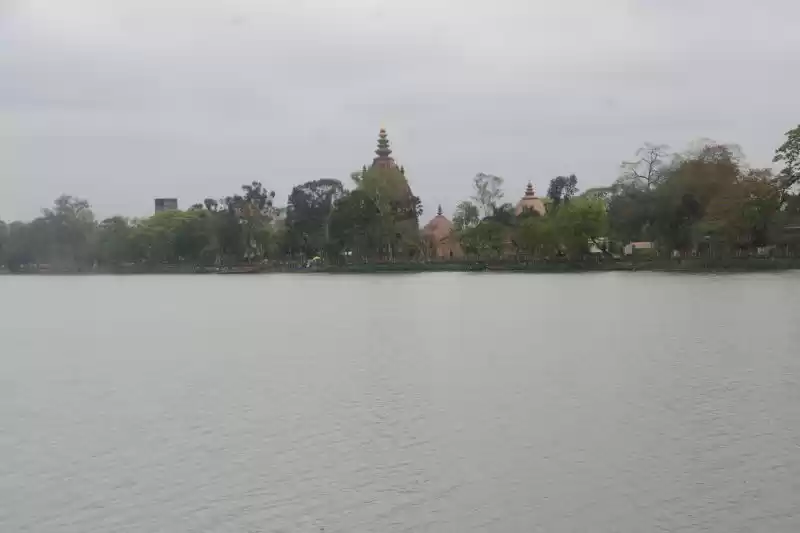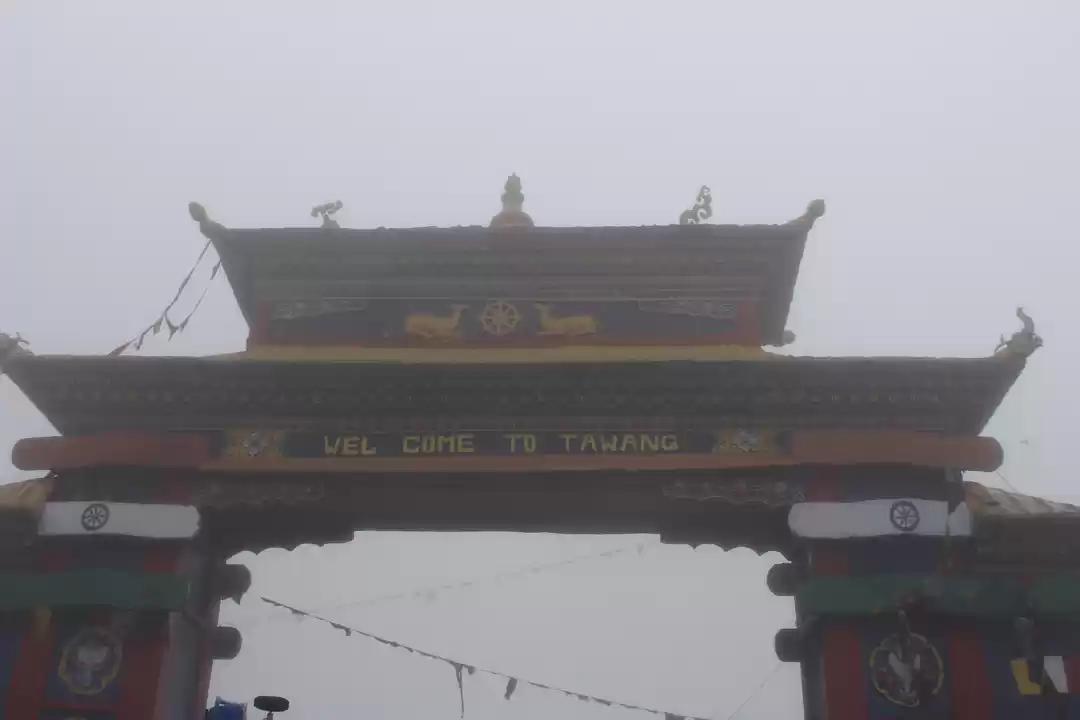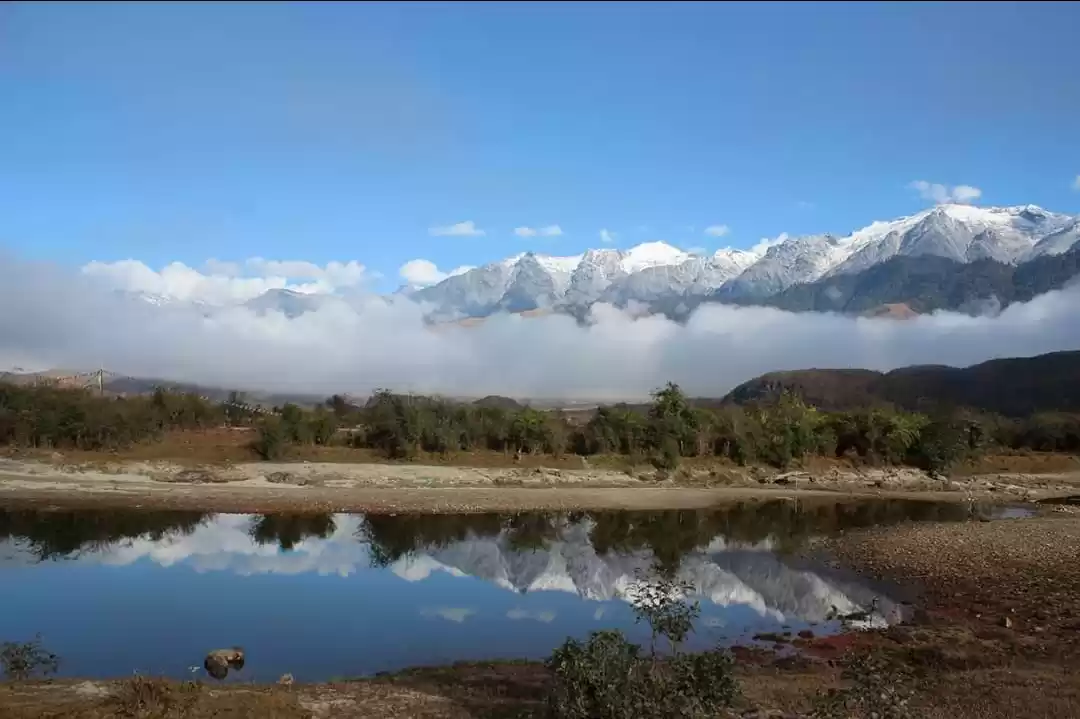
Tezpur, on the northern bank of Brahmaputra in Sonitpur district of North Eastern state of Assam is not a well-known name outside Assam. It is situated at a distance of around 175 km from Guwahati - the largest city in Assam and Gate way to North East. But Tezpur is a popular town in Assam due to its mythological connection to Mahabharata, historical importance, scenic beauty and rich cultural heritage. It also acts as entry point to some parts of Arunachal Pradesh. However, there is another reason why I have a soft corner for Tezpur - I was born here! My father was posted at a place in neighbouring state of Arunachal Pradesh and Tezpur was the nearest place with medical facilities. I visited Tezpur only once as a grown up, that too just had a glimpse while going to Arunachal Pradesh. So, when we got transferred to Jorhat in 2019, I planned to visit Tezpur. Outbreak of COVID kept delaying our visit. In September'2022 we fixed a weekend to make a trip to Tezpur. I wanted to visit Tezpur University famous for its educational excellence as well as the beautiful campus. A college senior from my engineering college days, Tridib da, is a faculty there. He is also a ONGC GT batch mate as he joined ONGC with us, but left corporate career to pursue academic career. I called him to ask whether we can visit the campus while we were in Tezpur. He instead offered to book accommodation for us in the university Guest House. I was happy to have that opportunity as I love the vibrant atmosphere in campuses of educational institutes.
On 2 nd September'2022, a Friday afternoon, taking a break from office after lunch, we started for Tezpur. It is around 180 km from ONGC campus in Jorhat to Tezpur University campus and took us around 5 hours to cover the distance driving almost non-stop. It was already dark when we checked into the Guest House. Yet we took a round of the campus. Tridib da came to meet us and we chatted happily catching up after many many years. He took leave inviting us for dinner next day at his residence.
On Saturday early morning, we explored the beautiful and well-maintained university campus covering as much as we can all its nooks and corners. It was a delight to visit the green campus, watching students playing sports, meeting morning walkers glancing at us curiously.




After breakfast, we were ready to explore my birth place. As Tezpur has many places worth visiting - ancient ruins and temples, parks and colonial buildings - and we had just a day, we made a list of the places we would cover.
How Tezpur got its name
A mighty asura, Bana said to have thousand arms once ruled over a large kingdom. He was an ardent devotee of Lord Shiva and became invincible as Shiva agreed to protect his kingdom. Banasura became arrogant due to this. He had a beautiful daughter named Usha. As tales of Usha's beauty spread far and wide, many suitors approached Banasura for her hand. He rejected all of them and kept Usha with few of her friends inside a fort which was surrounded by fire to prevent anyone from entering it. This fort was called Agnigarh - Agni meaning fire and Garh meaning fort. Usha dreamt of a young man and fell in love with him. She confided this to her closest friend Chitralekha. Chitralekha was a talented artist and also had magical powers. Chitralekha drew portraits of kings and princes from Usha's description and identified him to be Aniruddha - the grandson of Lord Krishna. She brought Aniruddha to Usha using her magical powers. Aniruddha also fell in love with Usha and they got married secretly. Banasura got very angry when he came to know of this and imprisoned Aniruddha. There is another version according to which Banasura kept Usha in Agnigarh after imprisoning Aniruddha to keep her separated from him. Hearing this Lord Krishna came to rescue his grandson and attacked the fort. Banasura asked for Shiva's help and this resulted in a battle between the two Lords. According to the Puranas, the battle left the entire kingdom drenched in blood; as a result of which the region came to be known as Tezpur (tez - blood, pura - city). Ultimately, when Krishna's forces were nearing victory, Shiva pleaded to Lord Krishna to spare the life of Banasura because of the promise he had made to Banasura to protect him. Krishna agreed to spare his life, but left Banasura with only four arms to limit his power. A grateful Banasura then released Aniruddha and Usha, and they left for Lord Krishna's land, Dwarka.
Maha Bhairava Temple
We started sightseeing in Tezpur by visiting the famous Mahabhairava temple. Located at a hillock on the northern part of Tezpur, Mahabhairava Temple is an ancient temple dedicated to Lord Shiva. It is believed that the temple has been established by King Bana in the pre- historical times. The original temple constructed of stone was destroyed in 1897 earthquake, and the present temple, made of concrete, was constructed in the early period of 20th century. The entrance gate has elaborate carving. The idols of Lord Ganesha and Lord Hanuman stand near gate as Dwarpals.


Bhairavi Temple
Dedicated to Goddess Durga, it is a very important Shakti Peeth of Assam. Legend has it that Usha regularly came here for the worshipping of the Goddess. The entrance to the temple is through a very long staircase that leads up from the approach road to the temple itself. The Kolia Bhomora Setu across the Brahmaputra River can be seen from the temple.

Bamuni Hills
When we reached Bamuni hills just near the Bhairavi temple, it started raining. We waited at a tea stall at the foot of the hills and had a cup of tea. It was still drizzling. Unwilling to lose any more time, we carefully treaded the stone stairway made slippery by the rain.
It is one of the best places to visit for archeology enthusiasts for awe-inspiring sculptural ruins and stone carvings. These ruins are dated back to 9 th and 10 th centuries AD according to the Archaeological Study of India (ASI). The architecture and carving on the walls of these ruins have shown similarities to those of the Gupta Period. The ruins are believed to have belonged to a Vishnu temple which got destroyed during 1897 earthquake. The panoramic view and artistic ruins make it a delight for photography enthusiasts. However due to constant drizzling, I could not take many snaps.

Kalaguru Bishnu Prasad Rabha Smriti Udyan
Kalaguru Bishnu Prasad Rabha was a versatile genius. He was a musician, dancer, poet, actor, film director, academician and a revolutionary. He spent his life working for the betterment of people at great cost to his personal life. The title Kalaguru was bestowed on him by Dr S Radhakrishnan at Varanasi after he witnessed a performance of tandava dance of Nataraja by Bishnu Rabha. Famous danseuse Uday Shankar was fascinated by Tandava dance of Rabha and wanted to learn it. His songs are now known as Rabha Sangeet. On the bank of river Brahmaputra near the Bhairavi temple, a memorial park has been set up at the site where Kalaguru Bishnu Prasad Rabha was cremated. One of his sons Hemraj Rabha took the initiative to pay tribute to his father and started the construction. The project was later on taken by the government of Assam. I heard some of his works are carved on the walls. Unfortunately, the gate was closed and we could not enter. The park looked beautiful and well maintained from the outside.

Agnigarh
This is where the romance blossomed between Usha and Aniruddha resulting in Hari-Har's battle as I described earlier while telling how Tezpur got its name. It's a verdant hillock with a circular stairway leading to the peak where one gets another breath-taking view of mighty Brahmaputra. It has been developed into a park by the Assam Tourism Development Corporation. Beautiful sculptures depicting the scenes of the love story of Usha-Aniruddha and the epic battle along the stairway makes the climbing easier. There are statues of Usha - Chitralekha and other characters enhancing the appeal of Agnigarh and making it one of the most visited places in Tezpur by tourist and locals alike.


Poki
Poki was the ancestral home of Rupkonwar Jyoti Prasad Agarwala, an icon of Assamese culture. He was a poet, dramatist, litterateur, artist, musician, film-maker and freedom fighter. He was the first film maker from Assam. He established a studio, Chitraban, at Bholaguri tea estate in Tezpur and made the first Assamese movie Joymati in 1935. Based on Lakshminath Bezbaruah's play about the 17th-century Ahom princess Joymoti Konwari who sacrificed her life to save her husband Gadapani so that he can oust the unworthy king and become the king himself. Besides producing and directing the movie he also had to act as script writer, choreographer, editor, set and costume designer, lyricist and music director. Joymoti was noted for the use of a female protagonist, something almost unheard of in Indian cinema of the time. Jyotiprasad had to overcome stiff social resistance and it delayed the film making process. The film was the first Indian talkie to have used Dubbing and Re-recording Technology. The film was taken to Lahore for editing where it was discovered there was no sound for one half of the film. Unable to marshal the actors once again from their native places due to various constraints, Jyotiprasad hired a sound studio and dubbed the voices of all male and female characters himself. On a single day, he recorded six thousand feet of film. This technical hitch made Jyotiprasad Agarwala the first Indian filmmaker to have introduced Dubbing and Re-recording Technology in Talkies. He made second Assamese movie Indramalati in 1939.
I had to see the residence of Rupkonwar. Following the direction of Google maps, we found out that it was in the heart of the Tezpur market. The house was built in 1874 by Hari Bilash Agarwala, grandfather of Jyotiprasad Agarwala. The house was the first concrete (pucca) house in Tezpur and therefore was popularly known as Poki. The Agarwala family which migrated from Rajasthan got fully assimilated in Assamese society and produced some of the most illustrious personalities such as Ananda Chandra Agarwala, Paramananda Agarwala, Chandra Kumar Agarwala and Jyoti Prasad Agarwala. The Architecture of Poki is a subtle blend of Rajasthani and Ahom style. It is also an epitome of Indian freedom struggle. During the freedom movement the place attracted many national leaders including Mahatma Gandhi, Jawaharlal Nehru, Lala Lajpat Rai, Motilal Nehru, Madan Mohan Malviya, Aruna Asif Ali, Dr. Rajendra Prasad, Raja Gopalachari, Acharya Narendra Dev, Bishnu Rabha, Phani Sarmah, Bhupen Hazarika, to name a few. The Agarwala family handed over the building and its premises to the government of Assam in 1977 for its preservation as a memorial museum. In 1978, a cultural centre called "Jyoti Bharati" was setup at the premises of Poki. It is presently a memorial museum of Rupkonwar Jyotiprasad Agarwala. It gave me goosebumps to step inside this historical residence and see the memorabilia preserved there.


Singpho Shat Gawk
It was past one pm and after walking and climbing hills since morning we were hungry. Tridib da recommended this restaurant for ethnic cuisine. The restaurant was near the Baptist Christian Hospital, popularly known as Mission Hospital, where I was born and we went to have a look from outside.

The restaurant is pretty with low seating and beautiful décor. We opted for Parampara Thali which was delicious presenting various dishes from Singpho cuisine. Singpho is a tribe inhabiting in Assam and Arunachal Pradesh. The Singphos are believed to be among first tea drinkers of India and have been using it for centuries chiefly for its medicinal values. They call it Phalap.


Ouguri Hills
Ouguri hills have huge monoliths and is a good place for rock climbing. From the summit one can have view of Brahmaputra on one side and the view of Tezpur from the other side. The hill top has been developed into a memorial park dedicated to Kanaklata Baruah, a martyr during Quit India movement.



Chitralekha Udyan
Chitralekha Udyan, named after Usha's talented friend, is a beautiful park established in 1906 by British Deputy Commissioner Mr. Cole and was earlier known as Cole Park. Many relics from Bamuni Hills are preserved here. A replica of the famous Bhomoraguri inscription near Kolia Bhomora Setu has been created in this park for public viewing. It has a pristine lake with boating facilities, amusement park for children, a jet-fighter model Valiant MIG 21, a large concrete-made map of India (states as before year 2000).

It started raining again and dusk settled in early. We decided to call it a day shelving our plan to visit Padum Pukhuri (Lotus Pond). There are more points worth visiting in Tezpur like Da Parbatia (ancient temple with architectural remnants), many more ancient temples, colonial bungalows and parks which we could not cover due to paucity of time. It is also a photogenic place with many spots offering the panoramic view of mighty Brahmaputra and the city. As it was a cloudy day, I did not get many photo friendly moments.
Returning to Tezpur University campus we went to one of the market complexes and had a refreshing drink of lemon juice. Later in the evening we went to Tridib da's residence and met his wonderfulfamily comprising his lovely wife Nandini and cute daughters Ritee and Rihaa. We had a lovely time chitchatting with Tridib da and Nandini and bonding with super friendly Ritee-Rihaa. After a delicious dinner we went back to Guest House.

On Sunday morning after breakfast, we left the university campus with beautiful memories etched in our hearts.
Kalia Bhomora Setu and Bhomoraguri Rock Inscrition
Kolia Bhomora Setu, a bridge across Brahmaputra connects Tezpur in Sonitpur district on northern bank with Kaliabor in Nagaon District on the south bank. There was an old bridge completed in 1987 which is a 3.015 km long. This bridge is name after Ahom General Kalia Bhomora Borphukan, who planned to construct a bridge over Brahmaputra river, but his sudden death caused its abandonment. A new Bhomoraguri-Tezpur Bridge 3.249 km long, few meters parallel to the existing Kolia Bhomora Setu was under construction and almost completed (It was opened for vehicular traffic in November'2022).
A text inscribed in Assamese script can be found on a Rock near the Koliabhomora Bridge on top of a hillock. The inscription along with the stone had to be relocated from its original site during the construction of Koliabhomora Bridge over the river Brahmaputra in the year 1985. The inscription describes the comprehensive victory of Ahom King Pratap Singh over the Mughal in the year 1616. While going back we stopped near the bridge and climbed up the hill to have look at the inscription. It was another goosebumps moment.

Afterwards it was non-stop drive to Jorhat to reach our then residence for lunch and a siesta after a very satisfying trip.



